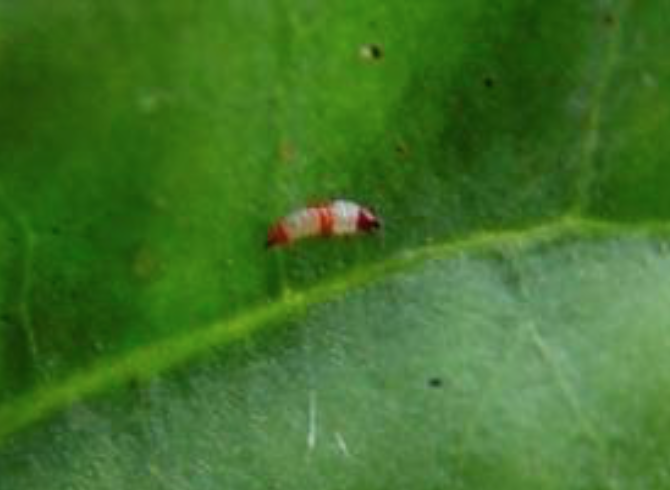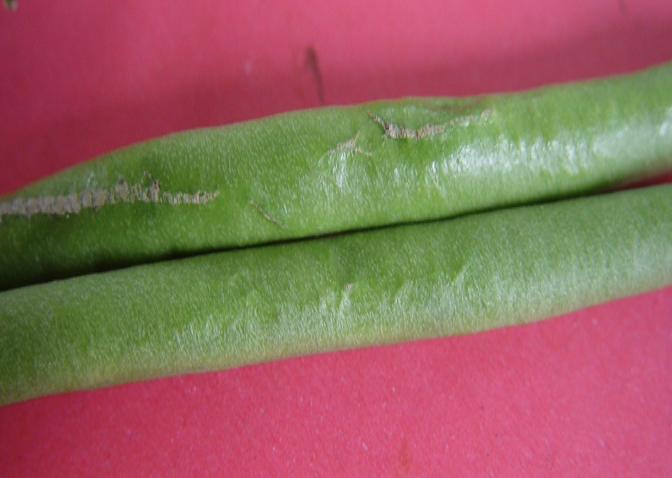Credits:Biovision-Infonet
Thrips-black tea thrips Heliothrips haemorrhoidalis and the red banded thrips Selenothrips rubrocinctus)
Credit: Biovision-Infonet

(c) A. M. Varela, icipe
Thrips are small, slender insects (1-2 mm long) with two pairs of fringed wings. Adult thrips attacking avocado are dark brown or black, and the immature stages are yellow in colour. The red-banded thrips can be distinguished by a bright red band across the abdomen of immature thrips.
Thrips are sometimes troublesome pests in avocado. They may cause damage to the leaves and fruit. Affected parts become whitish or silvery and are usually covered by dark-coloured droppings.
On fruit, feeding begins near the calyx, gradually producing a scar that can cover the whole fruit. Attacked fruits develop a leathery brown skin. Feeding is most common on young fruit; economic damage generally occurs on fruit up to 2 cm in length (2-3 weeks after fruit set). Older fruit with thicker skin is less susceptible to attack.
Thrips on Beans
Flower thrips (Frankliniella spp. and Megalurotrhips sjostedti)
Feeding by flower thrips causes scars and blemishes on leaves and pods. Flower thrips can be found feeding on young plants. They are less than 2 mm long. As soon as the plants start flowering, however, most thrips would be found in the flower buds, flowers and on the young pods. Heavy thrips feeding causes flower abortion and flower malformation. French bean pods become scarred (having a rough silvery surface) and malformed and are not marketable.

(c) A.M. Varela, icipe
What to do:
- Conserve natural enemies. Thrips are attacked by predatory thrips, lacewings and predatory bugs. Control measures are rarely needed.